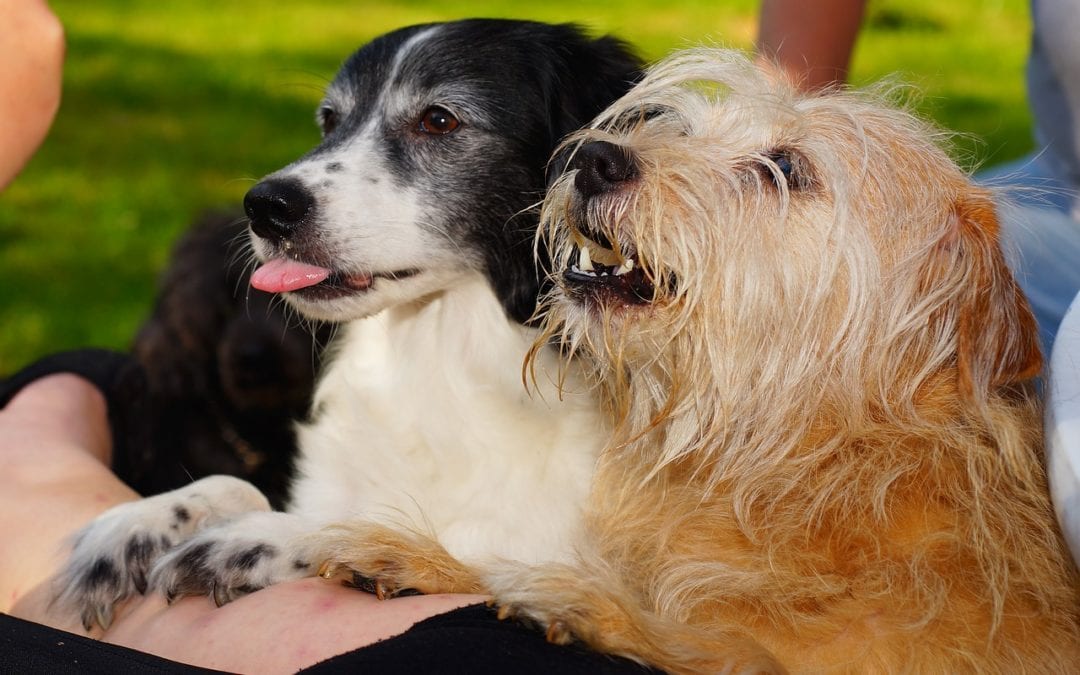How can a new dog owner separate truth from myth when attempting to choose the best method for canine obedience training and socialization? We can help!
The main training methods fall into three categories: 1) traditional corrective training that you may be familiar with, 2) positive reinforcement training which is more recent, and 3) individualized behavioral sessions. All of our trainers are graduates of the Karen Pryor Dog Trainer Professional program and teach force free training methods that are purely positively based. This method uses clicker training to focus on teaching your dog what they should be doing, rather than focusing attention on what they do wrong.
We’re strong believers in positive reinforcement training but many dog owners aren’t familiar with it yet. Since training and socialization play such an important role in your dog’s sense of security, safety, confidence, and health, allow us to address a few of the common myths about training to help you make the best training choice for your new canine family member.
Myth #1: Canine training using treats is basically bribery and does not address long-term training needs.
If done correctly, using food during training can be great reinforcement for a wanted behavior. Positive reinforcement training (or reward-based training) focuses on the positive behaviors you want from your dog, rather than the punitive or ‘alpha’ approach to punishing behaviors you don’t want. So using food when your dog is fearful of something can help him or her conquer that fear.
Treats can be an effective tool for reinforcing desired behaviors, since most dogs are motivated by food. This is not to say that treats should be used exclusively. When animals perform a behavior in order to bring about a desired behavior as clicker trained animals do, they are learning. Over time, dogs can learn respond to other forms of positive reinforcement in place of food, such as verbal praise, favorite toys, and eye contact.
Food in and of itself does not automatically motivate correct behavior but your pet naturally wants to perform based on an associated reward. Therefore, treats, in moderation, can be a great motivator, particularly in conjunction with the clicker method, and in the context of learning through positive reinforcement.
Myth #2: Positive reinforcement training doesn’t work without treats.
Once a behavior is learned and on cue, there is usually no need to click and treat. The reward – in this case, the treat – becomes less and less important as your dog learns the behavior on cue. A reward can consist of anything your dog really likes such as physical affection or verbal praise. Therefore, when using the clicker method, you can gradually eliminate the treat and the click, replacing them with pats or praise.
Myth #3: Positive reinforcement training is slower than traditional training methods.
Research into dog behavior shows has shown that positive reinforcement actually works faster! This makes sense as you are focusing on what you would like your dog to DO, rather than focusing on and correcting behavior you DON’T want from your dog. Unlike with traditional training methods, the attention to positive behavior is a stronger cue for your dog to begin to think for himself, causing an increase in learning.
Myth #4: Positive reinforcement training doesn’t work on aggressive or anxious dogs.
Positive reinforcement training is not only more effective on these dogs than traditional training methods are, but are the safest option for handling aggressive dogs. Since traditional training focuses on suppressing negative behaviors, it does nothing to encourage positive behaviors in dogs who need these behaviors modeled most.
Aggression in dogs is almost always fueled by fear. Using aggression-based training tactics to address aggression is dangerous for everyone and may prompt a dog to bite or attack. Those tactics only reinforce their fears and can even delay their ability to learn.
Both anxious and aggressive dogs require training that builds confidence rather than relies on power struggles and punishment. Positive reinforcement training instead not only addresses the surface problem behavior, but also the root cause of it. It changes the way the dog feels about that fearful situation for the rest of their lives.
We hope we have illuminated the most common myths you may have heard about training and we encourage you to explore positive reinforcement training for your puppy or adult dog. At Union Lake Pet Services, we have an array of classes tailored to address your pet’s age, challenges, and behavioral history.
If you would like learn more or register your pet for an upcoming positive reinforcement obedience class, please contact us at 248-363-6262 and ask for training or email Melissaf@unionlakepets.com

